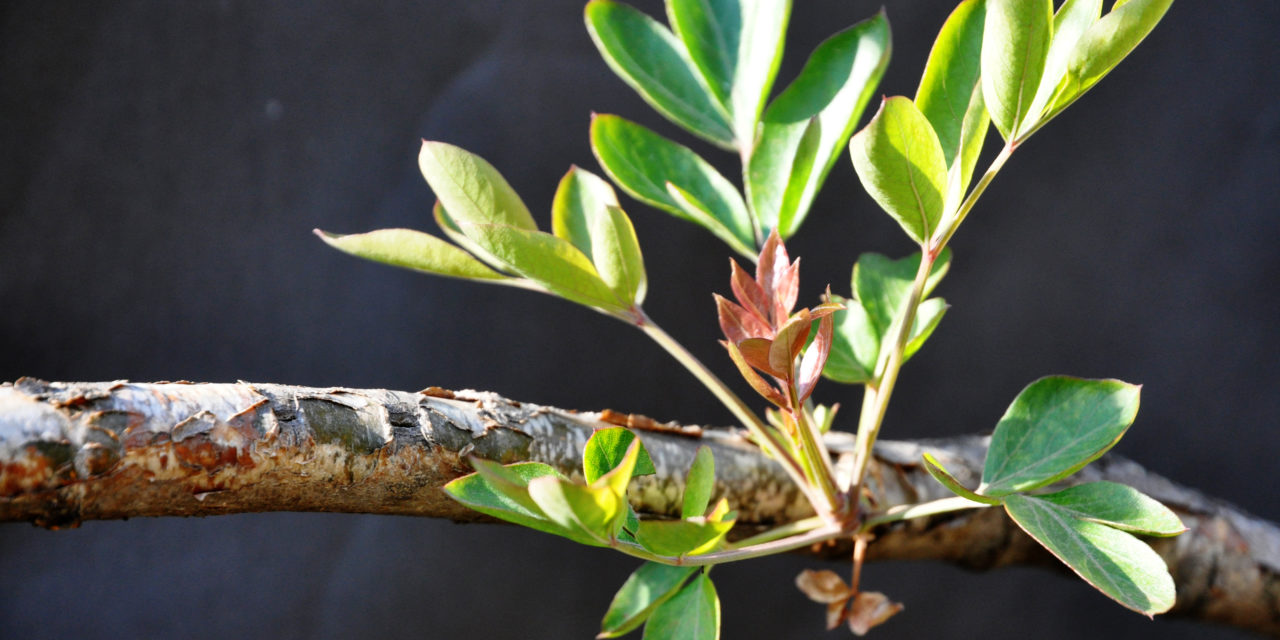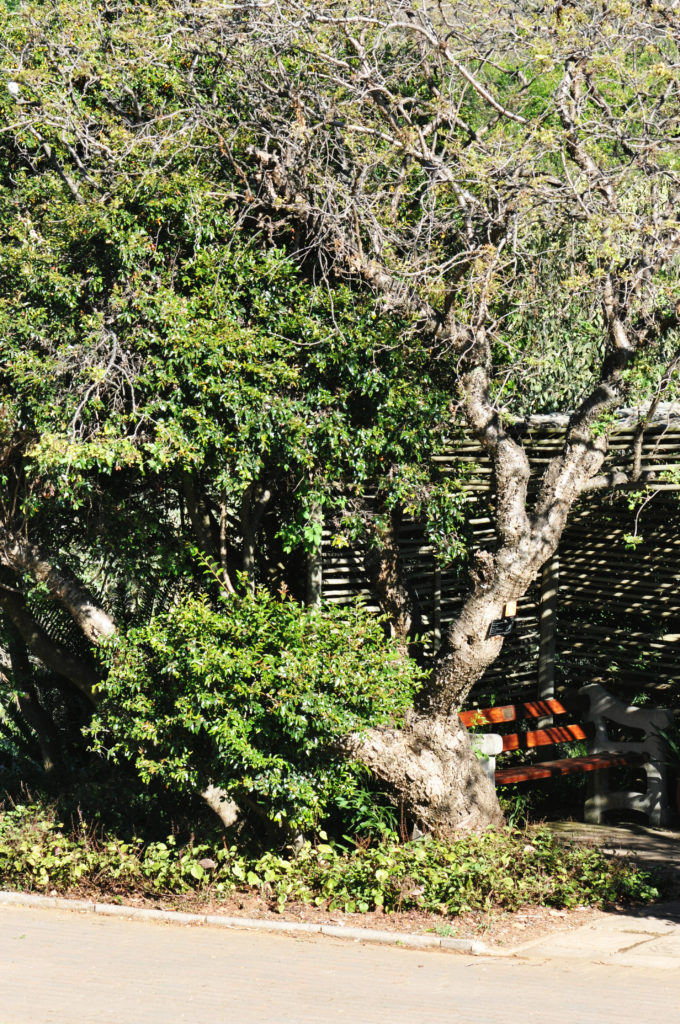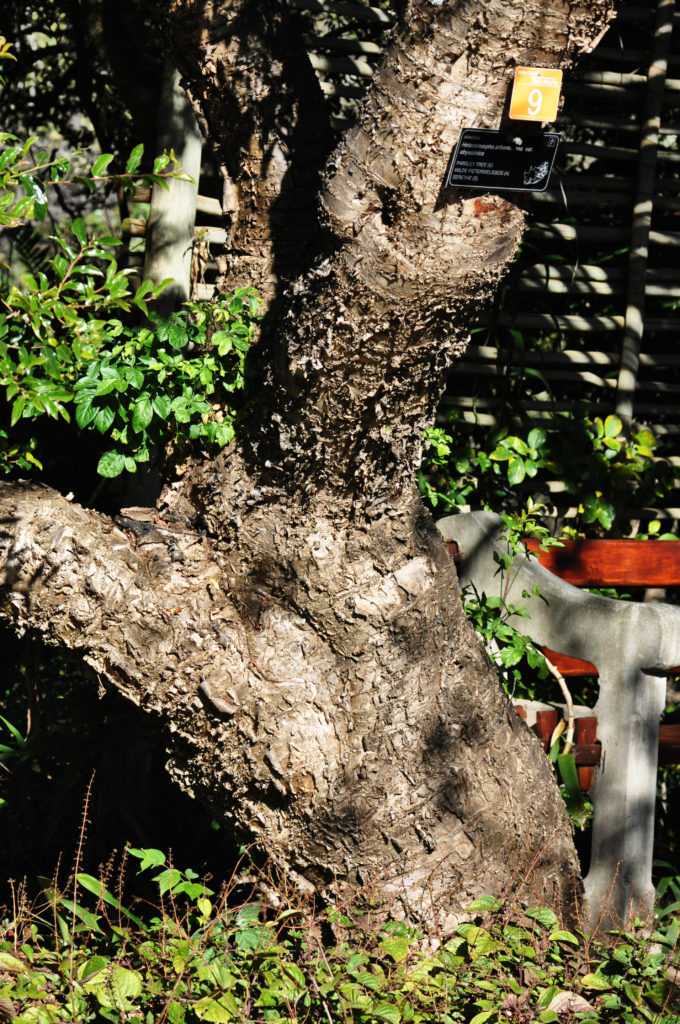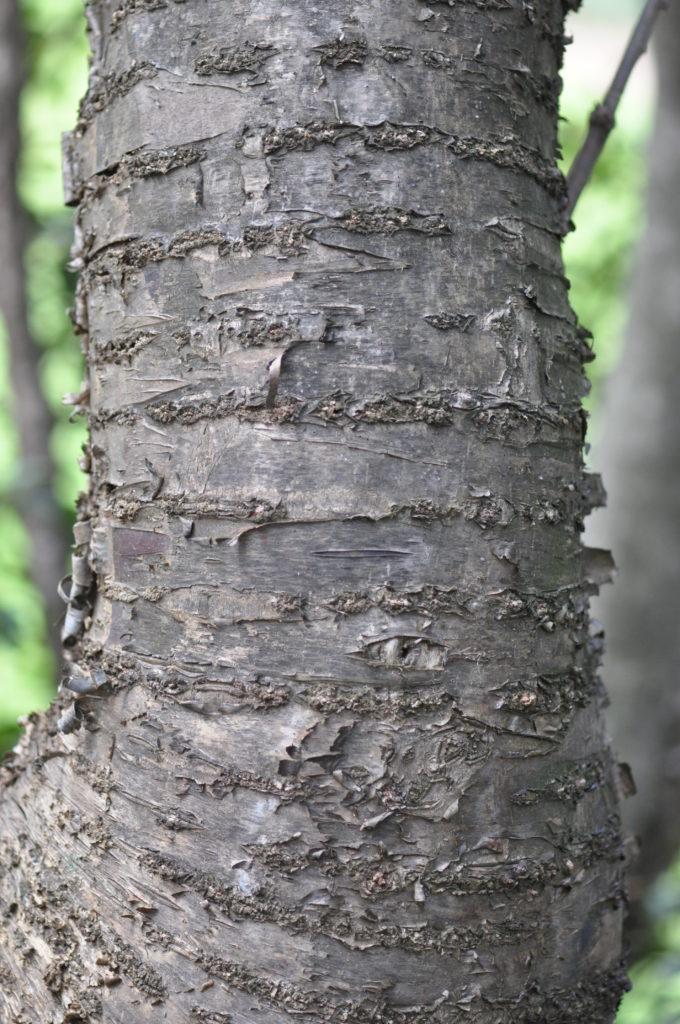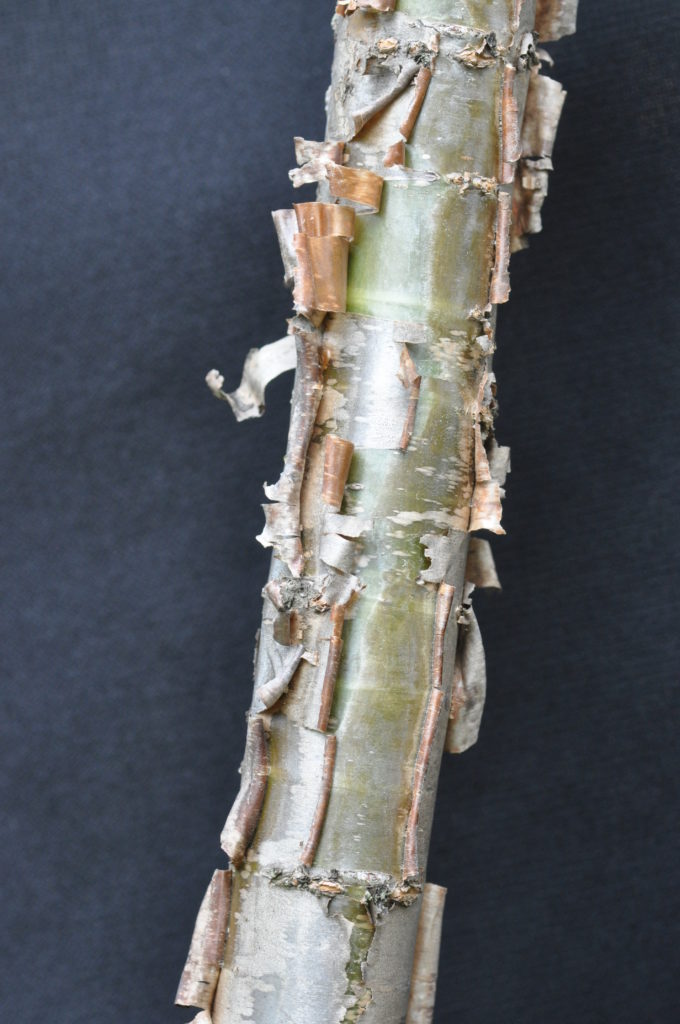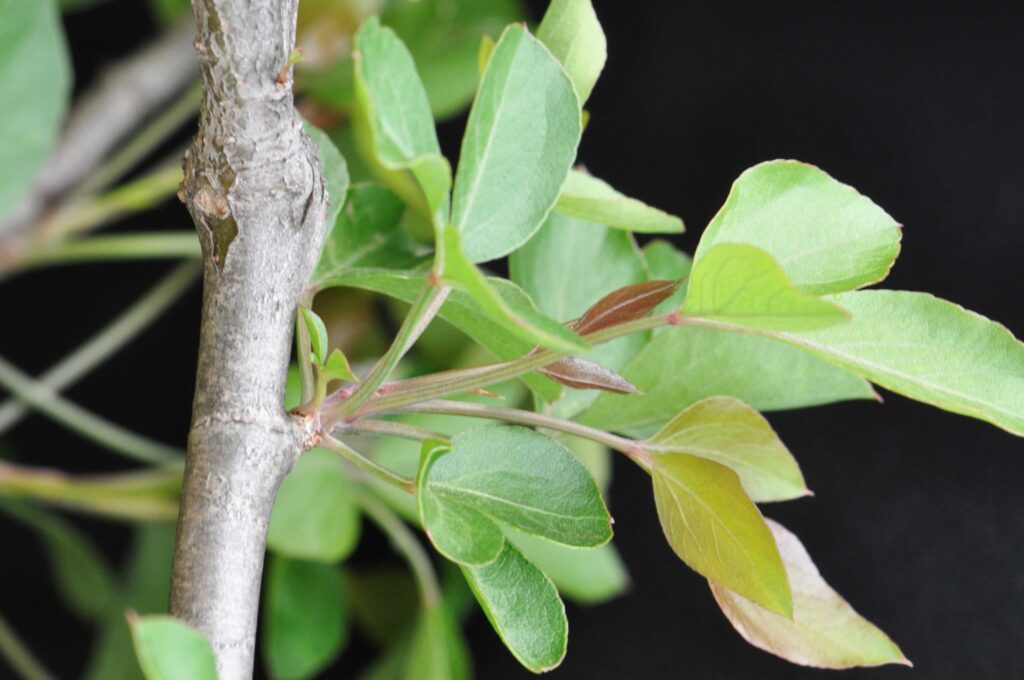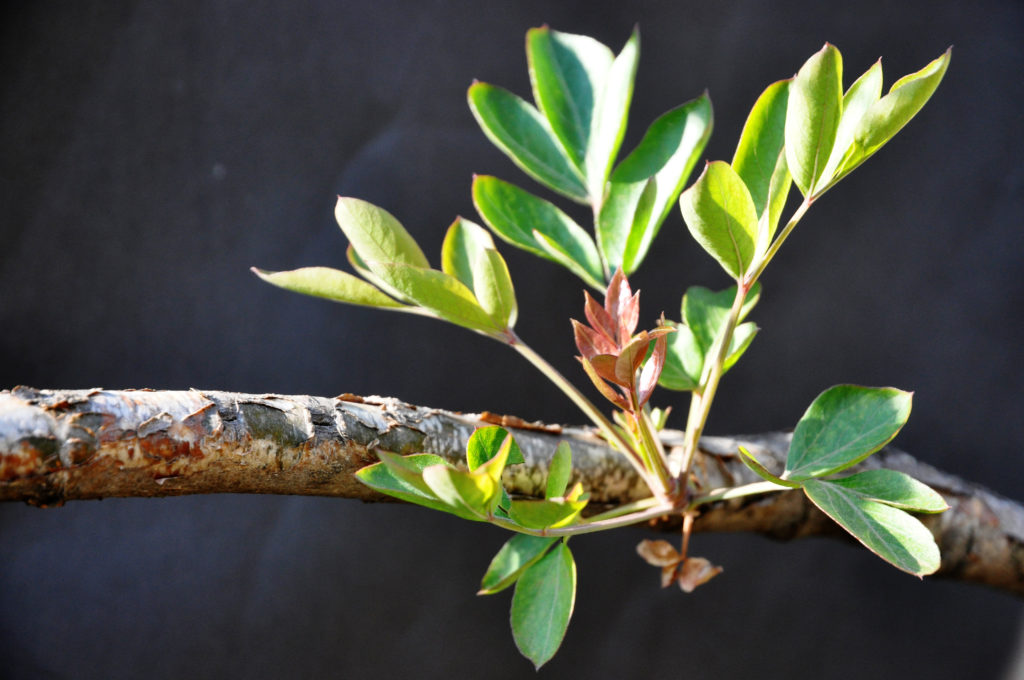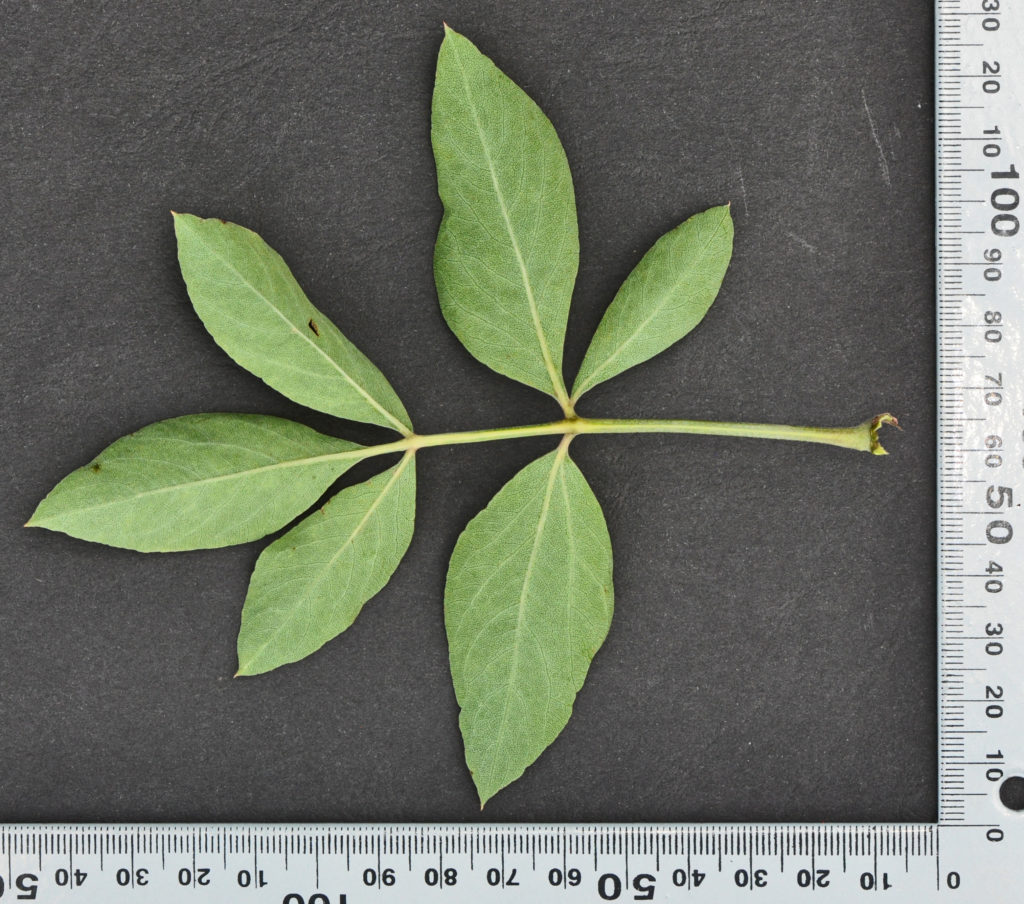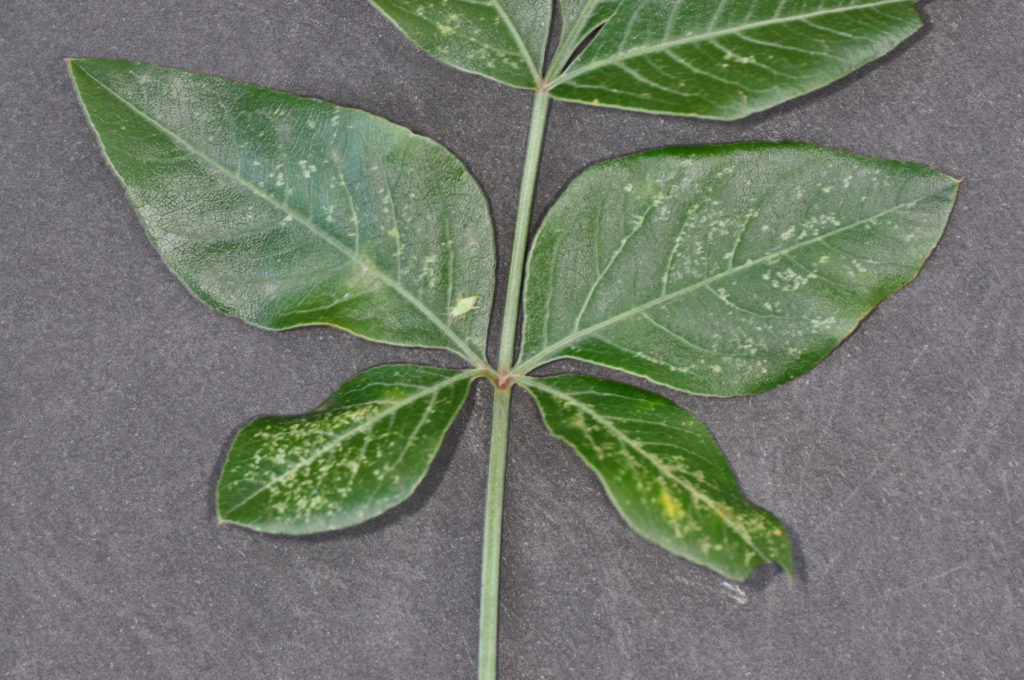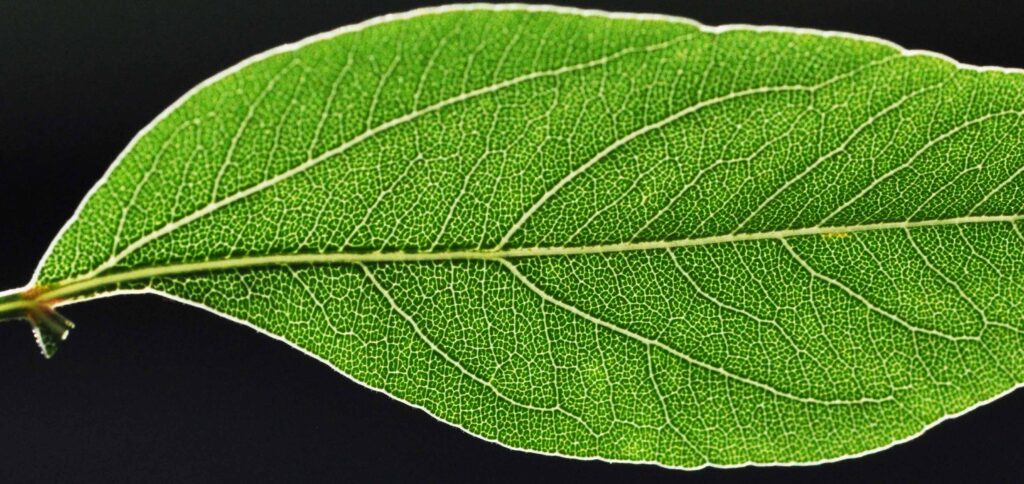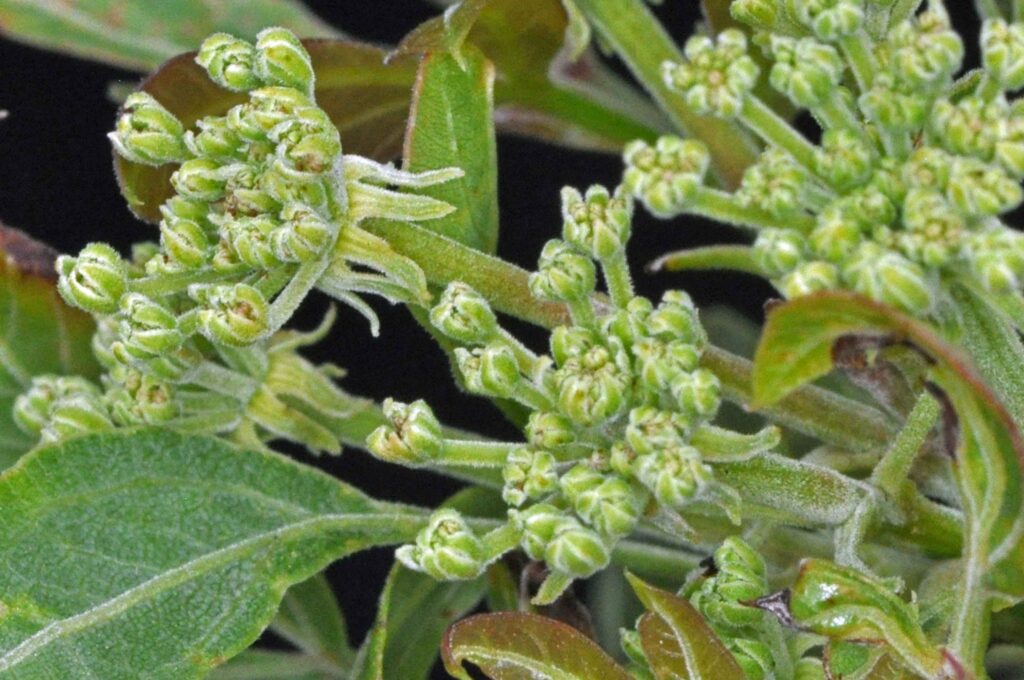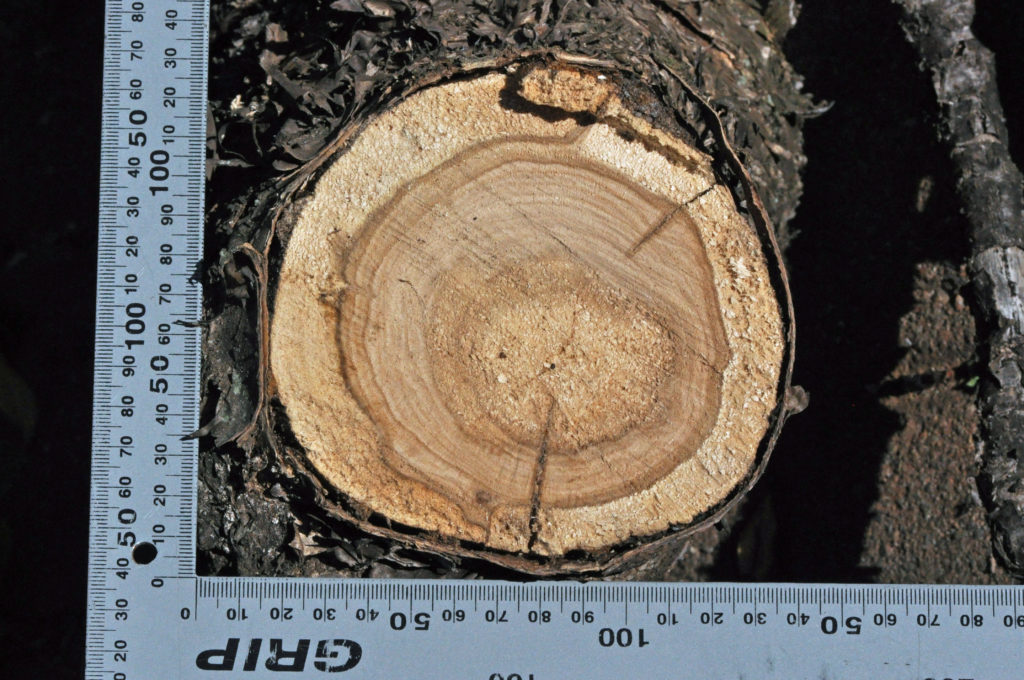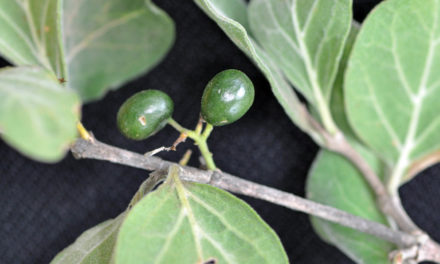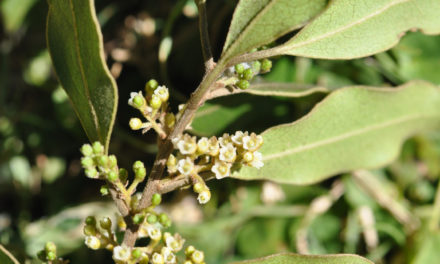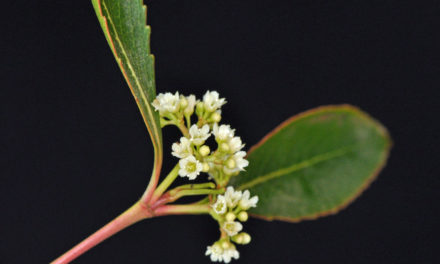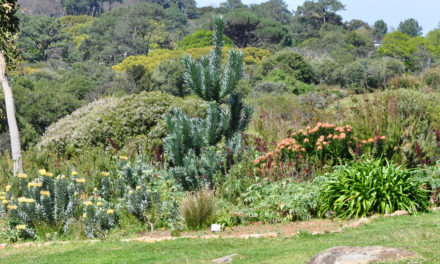General Info – summary
This spineless Tree may reach 15m high, has distinctive pealing, smooth and papery bronze bark. The usually aromatic and entire Leaves are variously shaped, imparipinnate & smell of parsley when crushed. Small, bisexual, 5-merous, regular Flowers in umbels and appear with new leaves. Stamens extended, 1 superior ovary and 2 short styles. Fruit – a small dehiscent schizocarp and seeds contain oil glands.
Description
Heteromorpha arborescens var. abyssinica
Previous Names: Annesorhiza abyssinica, Bupleurum trifoliatum, Heteromorpha arborescens, Heteromorpha trifoliate, Tenoria arborescens.
SA Tree No. 568.
Common names: (Afr) Kraaibos, Kraaihout, Papierboom, Pietersieliebosse, Skilferbaspieterseliebos Stinkbos, Wildepieterseliebos, Wildepietersieliebos. (Eng) Common Parsley-tree, Parsley Tree, Pealing-bark Parsley-tree. (isiXhosa) Lyeza-lempambano, Umaweni, Umbangandlala, Umbhangandlahla, Umbangandlela. (isiZulu) Umaweni, Umbangandlala, Umbhangandlahla. (Northern Sotho) Mokadala. (Setswana) Makatlala, Mongkhoane, Monkhoane. (siSwati) Imvusankunzi, Umbangandlala. (Tshivenda) Mula-notshi, Muthatha-vhanna.
Family: Apiaceae, Umbelliferae (This carrot family includes parsnip, parsley, turnip, aniseed and dill). The family has 300+ genera and 3 200+ species worldwide. There are about 36 genera and 152 species of this family in the South Africa. On this website, genera with trees include Heteromorpha. Furrowed stems have hollow or pithy internodes. Leaves are usually alternate and usually compound. They have a sheathing petiole and stipules are absent. Flowers occur in conspicuous Umbels. Individual flowers are small, regular and usually bisexual. The Calyx tube usually has 5 sepals which are attached to the ovary. The 5 Petals are free and soon fall. Alternating with the petals are 5 Stamens whose anthers contain 2 pollen sacs that open laterally. The inferior Ovary has up to 3 locules – each with 1 ovule. There are 2 free styles. The Fruit is usually crowned with calyx, disc and styles.
Name derivation: Heteromorpha – widespread different forms or shapes including referring to the fruit or the number of wings on the fruit. arborescens: tree-like. var. abyssinica – from Abyssinia (now called Ethiopia).
Conservation: National Status: L C. (Least Concern). 2005. Assessors (J.E. Victor and P.J.D. Winter).
Tree
This spineless Tree (photo 79) is up to 9m but may reach 15m high. The straightish, upright and initially transparent Trunk is up to 30cm in diameter. The plant may be a multi-stemmed, straggling open branched shrub. Fallen leaves leave ring like scars on youngish branches (photo 578 under Leaves). The distinctive Bark is smooth, papery bronze coloured and may be slightly waxy. Pealing bark in horizontal bands may occur in older specimens (photo 1012). Exposed bark is yellowish-brown (photo 78) or reddish. The shiny bark darkens with age. New branches, with a glossy greenish colour (photo 654), resemble satin (a smooth, often silk fabric that is woven with a glossy face and a dull back). This plant can hybridise.
- 79 2014.06.03 Walter Sisulu NBG. Photo: David Becking.
- 78 2014.06.03 Walter Sisulu NBG. Photo: David Becking.
- 1012 2014.04.01 Walter Sisulu NBG. Photo: David Becking.
- 654 2015.10.27 Walter Sisulu NBG. Photo: David Becking.
Leaves
This deciduous tree often has soft, spirally arranged compound Leaves. They are up to at least 15 x 10cm. Young leaves are initially reddish (photo 1164 and trifoliate (photo 578). When mature the soft compound leaves are often imparipinnate (pinnately compound leaf ending in a single leaflet, with a broad based Petiolule (stalk of a leaflet) that is up to 3cm long – photo 1164). Some petiolules are more conspicuous than others (photo 696). Here there may be up to 9 variably arranged Leaflets with 2, 3 or 4 (photo 74) arising from the same point on the rachis (main axis bearing flowers or leaflets – photo 696). The variable leaflets (even on the same tree) may be ovate, obovate, elliptic or sickle-shaped and are darker above (photo 696 & 74). Leaflets are soft and usually hairless (apart from the midrib) and tend to droop. Leaflets may be strongly asymmetric (not equal to the opposite side as in the bases of some leaves – photos 74 & 593). The rounded Apex is tapering or notched and may end in a sharp point (photos 696 & 595). The Base is rounded or tapering and may be slightly decurrent (edge of the leaf base runs down the petiole). The Upper surface of the blade is a slightly darker green. Here the slightly sunken veins are visible – photo 74). The Lower surface is a lighter green and the veins are raised (photo 696). Vein details are best viewed with the leaf held against a strong light (photo 595). The veins near the base on either side of the midrib of asymmetric leaves may differ substantially (photo 593). After a cold spell, leaves may turn yellow or red before falling. Crushed leaves are usually aromatic and have the smell of parsley or parsnip hence the common name. The Margin is usually entire but may be slightly scalloped. The Petiole (leaf stalk) is up to 5cm long, channelled on the upper side (photo 74) and clasping the stem at the base (photo 696).
- 578 2015.0578. 2015/09/22. Walter Sisulu NBG. Photo: David Becking.9.22 Walter Sisulu NBG. Photo: David Becking.
- 1164. 2015/08/18. Walter Sisulu NBG. Photo: David Becking.
- 696. 2014/11/18. Walter Sisulu NBG. Photo: David Becking.
- 74. 2014/09/30. Walter Sisulu NBG. Photo: David Becking.
- 595. 2019/09/18. Walter Sisulu NBG. Photo: David Becking.
- 593. 2019/09/18. Walter Sisulu NBG. Photo: David Becking.
Flowers
The small, greenish or yellowish, 5-merous Flowers develop in dense round heads or in compound Umbels (inflorescence in which flower stalks arise from a common point photo 248). They appear with and just above the new leaves at branch ends. The bisexual flowers are actinomorphic (Regular, symmetrical. Flowers are vertically divisible into similar halves by more than 1 plane passing through the axis). Flowers form is bracteate (photo 248). A conical expanded Disc (a more or less fleshy or elevated development of the receptacle) is present. The Calyx has 5 triangular teeth. The 5 free, more or less elliptic Petals are curved inwards and keeled on the inner face. They are inserted on the margin of the disc and are short lasting. The 5 Stamens alternate with the petals, are curved in and extend slightly beyond the petals. The Filaments are inflexed in the bud and each filament ends with 2 Theca (pollen sacs) which open laterally. There is a single Pistil (a unit of the Gynoecium, the female element of the flower, composed of the Ovary, Style and Stigma) with an inferior, bilocular Ovary. Two very short Styles are present. The flowers may be strong smelling. (Nov–Apr).
- 248. 2015/12/12. Walter Sisulu NBG. Photo: David Becking.
Fruit
The small – up to 7mm long, elliptic or somewhat pear-shaped Fruit is a light, slightly winged Schizocarp (a dry, dehiscent fruit that splits into 2 one seeded portions at maturity – called Mericarps. Fruits are slightly cordate (heart shaped), laterally flattened with prominent ribs and elevated by a Carpophore (an elongated axis that raises the stem of the pistil above the stamens). The slightly winged fruit is up to 7mm long and becomes light creamy brown when mature. Seeds contain oil glands. (Feb–Aug).
Distribution & Ecology
These Trees grow in streambeds, on riverbanks, close to woodland, on hill slopes, on mountaintops or grass-veld – almost everywhere from 400m upwards, including dry riverbeds. Trees are drought and frost hardy. They occur from the Eastern Cape, KwaZulu-Natal, Free State, Gauteng, North West e.g., on southern and eastern slopes of Magaliesberg, Limpopo and Mpumalanga. They also occur in Lesotho, Swaziland, Mozambique, Zimbabwe, Northeast Namibia, Malawi, Yemen and Ethiopia.
Ethnobotany
Crushed Leaves smell of parsley and Fruits contain unstable oils. The Tree has non-invasive roots and musical bows are made from the soft Wood. This is too soft for use in buildings. It is planted in Lesotho villages to keep people loyal to their chiefs. Root extracts are active against gram-positive bacteria and for inhibiting fungal growth. Propagation from seed is rapid – up to 2m per year. Local medicine makes much use of the bark, leaves and roots.
- 564 2017.01.24 Walter Sisulu NBG. Photo: David Becking.
References
Boon, R. 2010. Pooley’s Trees of eastern South Africa. Flora and Fauna Publications Trust, Durban.
Burrows, J.E., Burrows, S.M., Lotter, M.C. & Schmidt, E. 2018. Trees and Shrubs Mozambique. Publishing Print Matters (Pty) Ltd. Noordhoek, Cape Town.
Coates Palgrave, M. 2002. Keith Coates Palgrave Trees of Southern Africa, edn 3. Struik, Cape Town.
Lawrence, G. H. M, 1951. Taxonomy of Vascular Plants, The Macmillan Company, New York. Tenth Printing 1965.
Palmer, E. & Pitman, N. 1972. Trees of southern Africa, Balkema, Amsterdam, Cape Town.
Schmidt, S. Lotter, M. & McCleland, W. 2002. Trees and Shrubs of Mpumalanga and the Kruger National Park.
van Wyk, B. & van Wyk, P. 1997 Field guide to Trees of Southern Africa, Struik, Cape Town.
Victor, J.E. & Winter, P.J.D. 2005. Heteromorpha arborescens (Spreng.) Cham. & Schltdl. var. abyssinica (Hochst. ex A.Rich.) H.Wolff. National Assessment: Red List of South African Plants version 2020.1. Accessed on 2023/07/13.
http://witkoppenwildflower.co.za/heteromorpha-arborescens/
http://www.plantzafrica.com/planthij/heteromorpharbor.htm
http://www.zimbabweflora.co.zw/speciesdata/species.php?species_id=143100
http://pza.sanbi.org/heteromorpha-arborescens
http://posa.sanbi.org/flora/browse.php?src=SP

